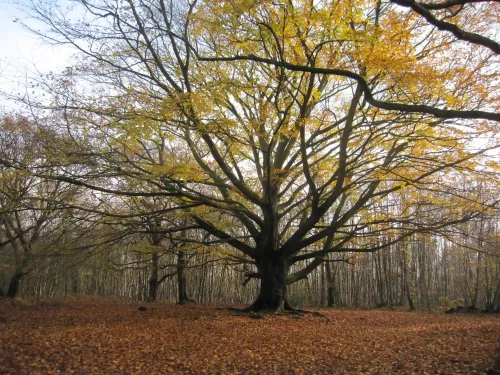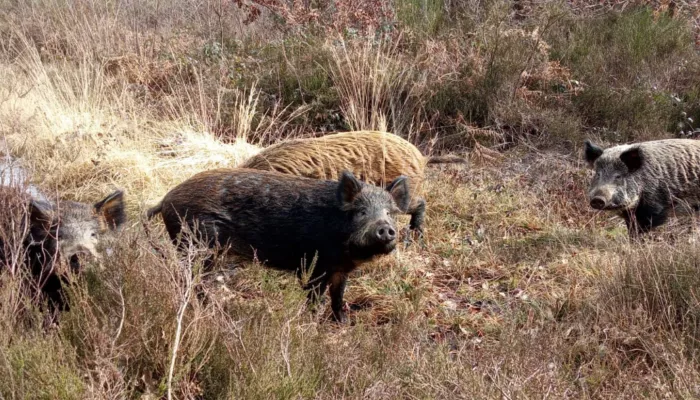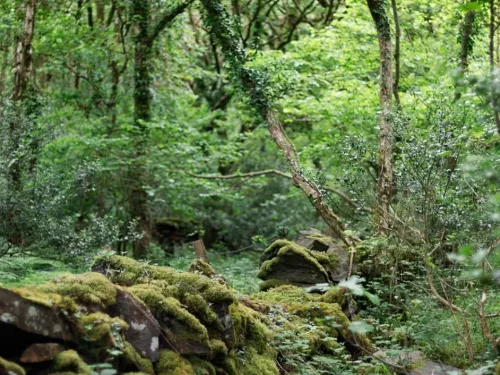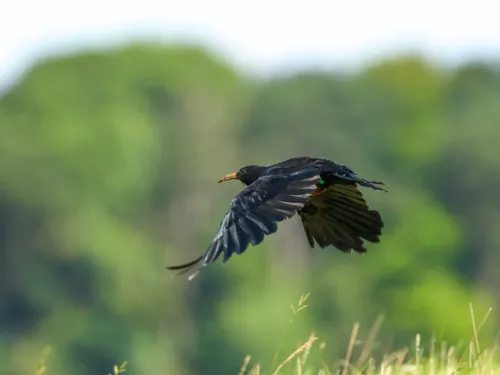
What would life be like without our woodlands?
Natasha Ruskin explores something terrifying: a world without woodlands.

Some of our most rare flowers are called 'arable plants' because they are found in arable fields (ploughed for food production like wheat, barley and rapeseed). The lifecycle of these flowers - such as corncockle, Venus looking glass and round-leaved fluellen - relies on the ground being turned over (by tractors in this case) and their seeds being exposed for a time when they have almost no competition from other plants. Unfortunately, these flowers are in decline because modern farming is too clean; there is no space left for arable plants considered to be ‘weeds’.
The decline of these plants has knock-on effects on the whole ecosystem. They are the food source for a wide variety of farmland birds which are also declining in number, including iconic species such as the turtle dove. These birds rely on arable plants that seed early and profusely with oil-rich seeds (helping the birds recover their strength after their migration from Africa to Britain, and allowing them to successfully rear young).
The seeds of disturbed ground specialist plants have lifecycles that are adapted to cycles of cropping and grazing. They can live in the soil undisturbed for many years and as soon as they sense their time is right, they germinate, flower and set seed in a flurry of activity. This is why they are already in seed when the turtle doves return from their migration in late spring.
Many of these plants are small and grow low to the ground too. Extra light created at the ground level by cropping or grazing the taller plants around them will also trigger them to flower and seed, which is why they are so good at extending the nectar season for our pollinators and, during an uncertain year, may help them store enough energy for the winter months.
But, it is not only tractors that can create disturbed ground - pigs can do this too.
Although we have been ploughing soil since the stone age, we weren’t the only ones to be creating this habitat - wild boar once roamed our landscape and disturbed ground. This is where our pigs come in - they are stand-ins for wild boar which no longer exist. In the wild, these creatures are shy, preferring the cover of woodland to hide in but they are also predators, fiercely protective of their young and able to eat pretty much anything.
They can live on vegetation, and when the ground is hard and dry in the summer they can act like cattle, chomping away on the grasses, thistles and scrubby bushes. Unlike our other grazers and browsers however, pigs are unique in being able to get nutrition from below ground. Using their strong muscly snout, they turn over the ground looking for roots, tubers, worms, beetles and anything else remotely edible. They don’t find everything so there is often a trail of other animals following in their wake, from the humble robin to the majestic buzzard, looking to cash in on small offerings left behind.
Just like a tractor, this ploughing of the ground produces open, bare ground - just right for the specialist arable wildflowers. Unlike a tractor though, pigs are much more nuanced. Pigs are tuned into their habitat; the places they choose to plough have soft, deep soils, often on the edges of woodland where the ground stays damper for longer. They eat the big roots they find, like those of creeping thistle, nettle and cow parsley which gives the smaller, gentle plants a blank canvas.
In the first year of pig activity, disturbed ground wildflowers dominate the space. In year two, the other plants that don’t like competition also start to appear, by year three the grasses are re-establishing and the flowers are being pushed out again. When pigs have enough space they rotate around an area, not rootling over the same space in quick succession, allowing this natural process of regeneration and change to be happening at different stages across a landscape.
Pigs create a really varied structure, with lots of different depths, contours and edge variation - something a tractor would find very difficult to do. This variety is ideal for small insects like spiders and ants. Birds such as skylarks are often supported by ‘Skylark plots’ where a tractor leaves a bare square in the middle of a field. This is because they hunt for things like spiders to feed their young and they can’t spot them in densely covered crops. The variation in the pig rootles allows for a wide range of small insects to find food, extending the feeding options for the skylark and making it more likely they will find the food they need regardless of other changes such as temperature, or rainfall.
The contours also increase the range of ‘micro-habitats’: tiny south-facing slopes, miniature ponds, small areas of bare chalk, sand or gravel. These mini-sites encourage a wide variety of plant types, associated insects and even reptiles to find a place to live, food and shelter.
At Nashenden Down, we are discovering that chalk downland plants, which don’t like competition from other bigger plants, are some of the first flowers to come back into pig-rootled areas. Specialist grasses, that feed marbled white butterflies, excel in growing in their little pincushion form, exactly right for laying eggs.
Find out more about our Iron-Age pigs in West Blean and Thornden Woods below.

Natasha Ruskin explores something terrifying: a world without woodlands.

This guest blog from Flora Hastings, Nature Immersion Workshop Leader, explores outdoors, immersive workshops that use the body and conversation to unravel the connections we have to the environment around us.

If you're a wildlife enthusiast that wants to get started with photographing what you see, it's important to get the basics down so you can make the most of those precious trips. Kent Wildlife Trust's Content Creator, Tim Horton, talks through his…